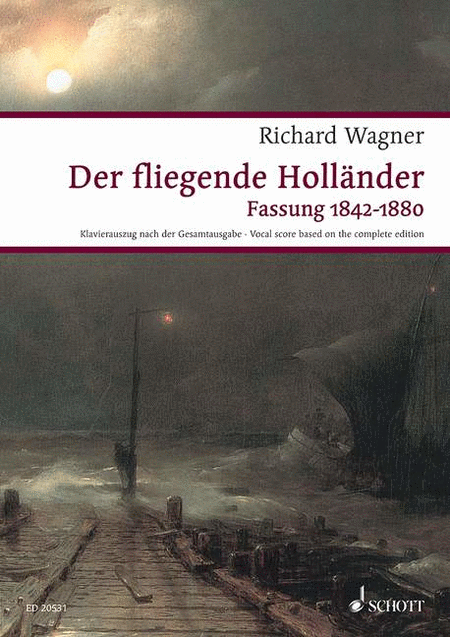Picc. · 2 · 2 · Engl. Hr. · 2 · 2 - 4 · 2 · 3 · 1 - P. - Str. Auf dem Theater: 3 Picc. · 6 Hr. · Tamt. · Windschleuder - Digital Download SKU: S9.Q25918 Romantische Oper in drei Aufzügen. Composed by Richard Wagner. This edition: vocal/piano score. Initial release - opera - theater. Wagner Urtext Piano/Vocal Scores. Downloadable, Piano reduction. Schott Music - Digital #Q25918. Published by Schott Music - Digital (S9.Q25918). German.An important addition to our newly produced orchestral materials is the first publication of vocal scores of Wagnerâs ten great operas, in every important version, based on the Complete Edition. * The score corresponds to the performance materials from the Complete Edition. * For practical use in rehearsal cues and bar numbers throughout. * The publisher has secured the services of renewed musicologists associated with the Richard Wagner Complete Edition who convey detailed information in critical forewords. * The forewords are given in three languages(German, English, French). * Uniform and attractive front cover designs with reproductions of paintings from the Wagner era underline the series design of the edition. DER FLIEGENDE HOLLÃNDER (1842-1880 version) This piano reduction is based on the edition of Der fliegende Holländer from the Critical Complete Edition of Richard Wagnerâs works (Richard Wagner, Sämtliche Werke [Collected works], Vol. 4, III-VI, edited by Egon Voss, Mainz, 2000f.) The primary source for this edition was the first print of the score dating from 1845 which had however been augmented utilising the sources of additions undertaken after 1845, meaning that this edition is actually a compilation of the final versions of all individual sections or relevant details. The overture for example dates back to 1860 whereas No. 1 appears in the version from 1864. What is however most significant is that the versions from the Collected Editions based on new sources is without doubt closer to the original than the score from 1897 edited by Felix Weingartner which had previously formed the basis for all editions and logically also for all performances.â (Egon Voss, quoted from the foreword of the new Der fliegende Holländer vocal score) Original version and 1842-1880 version The original version of Der fliegende Holländer dates from 1841. Wagner, at the time a completely unknown Kapellmeister in France, trying to get a foothold in Paris, saw the opportunity for a stage work that would meet the fashion at the Paris Opera of performing several short works one after another. Der fliegende Holländer, conceived in 1840 and composed in 1841, seemed to him suited to the purpose. In 1841, even when Wagner no longer counted on a success in Paris, he still held to the conception of a one-act opera and offered the work to German opera houses under the title of âRomantic Opera in One Act and Three Scenesâ. This version is set in Scotland, taking as the literary model for the opera Heinrich Heineâs novel fragment âFrom the Memoirs of Mr. Schnabelewopskiâ, and the protagonists have English names. This version was never performed in Wagnerâs lifetime. Beginning in 1842, the work went through a tale of constant revision: Even before the Dresden premiere (2nd January 1843) Wagner undertook fundamental alterations. He transposed the location from Scotland to Norway, changed characterâs names as appropriate, divided the opera into three acts â not least due to considerations of scene changes â and transposed Sentaâs Ballad from A minor to G minor. It was in this version that the score of the opera went to print in 1845. For a performance in 1860 he composed the later so-called âTristanâ or âRedemptionâ ending to the Overture. Until the very end of his life, Wagner contemplated a plan for a final score or a definitive vocal score: it never came to be, so that to this day, as with Tannhäuser, we still do not have Der fliegende Holländer in a final version. Based on the research conducted in the creation of the Complete Edition, our editions contain, in one case the original version of 1841, while the other essentially goes back to the first printing of the score of 1845, but with the addition of the source material for the retouchings dating from 1842 to 1889. VOCAL SCORES The original version of the opera was made available for the first time in a vocal score in 2005 (ED 8065). The completely revised new edition of the vocal score of the 1842-1880 version appeared in 2011 (ED 20531).
